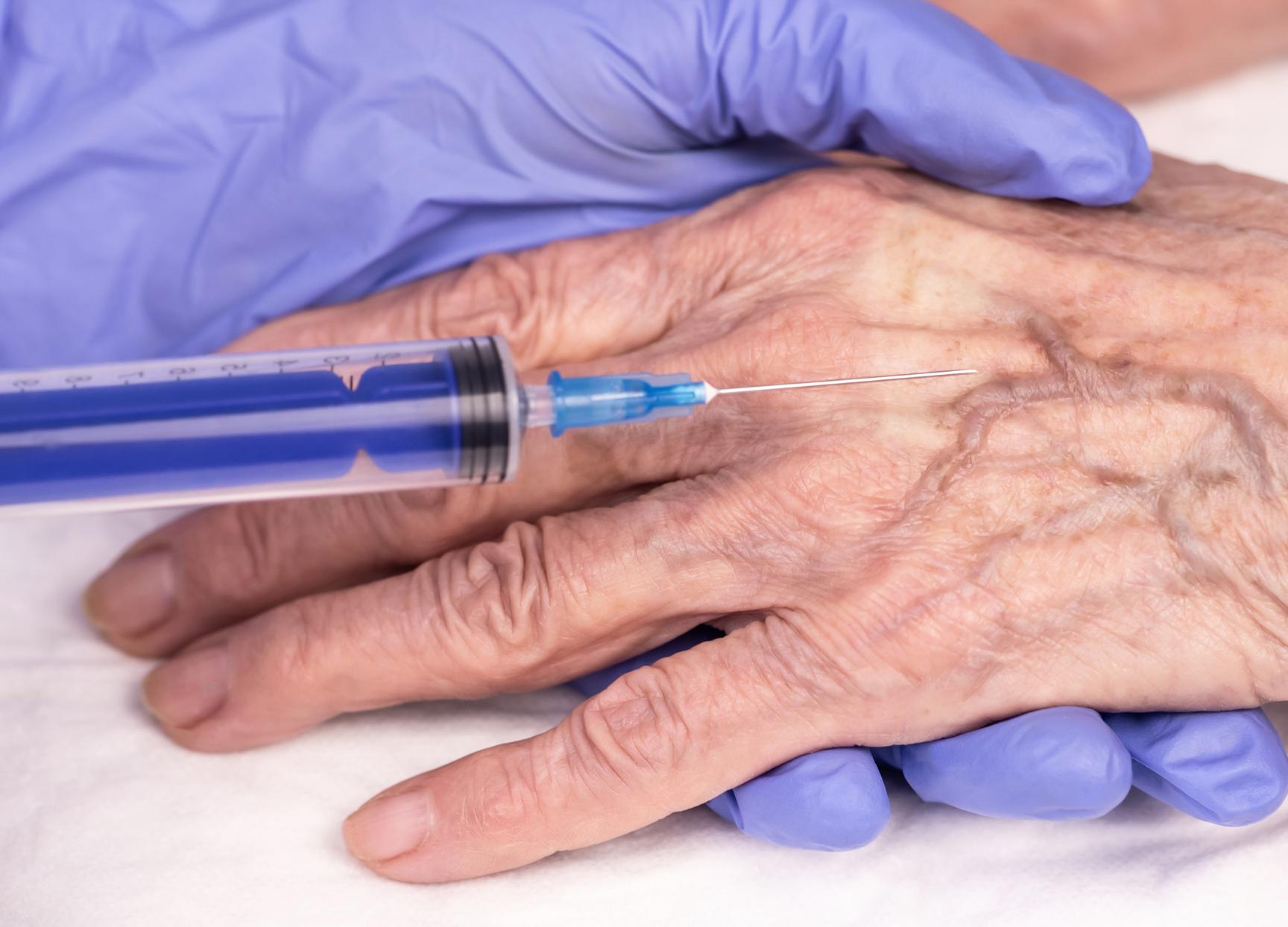Miss Rachel Clough
Consultant Vascular Surgeon
Specialist expertise: Vascular Surgery, Varicose Veins, Heart Health, Vascular.
Sclerotherapy is a minimally invasive procedure commonly used to treat varicose and spider veins to improve their appearance and reduce any symptoms they cause.

Sclerotherapy is a minimally invasive medical procedure that utilises a chemical solution to treat varicose and spider veins, improving their appearance and relieving associated discomfort. It is a common and effective treatment option for individuals seeking to manage varicose and spider vein concerns.
Sclerotherapy is a minimally invasive medical procedure that utilises a chemical solution to treat varicose and spider veins, usually on the legs, improving their appearance and relieving any associated discomfort. It’s a common and effective treatment option for those looking to manage varicose and spider vein concerns.
Varicose and spider veins, wherever they are on your body, can cause problems with body image and self-esteem. In some cases, they can also be uncomfortable and itchy and can cause swelling and cramping when they affect areas like the legs.
Sclerotherapy is highly effective in reducing both the appearance and physical symptoms of these types of veins, which can help improve your confidence and make you feel more comfortable in your day-to-day.
While sclerotherapy is the most commonly used treatment for varicose and spider veins, it’s not an appropriate solution for everyone. At your initial consultation, your OneWelbeck dermatologist will take your medical history and examine the area affected. They will then be able to confirm whether or not sclerotherapy is a suitable treatment for you.
You will not be able to have sclerotherapy if you:
Have an active deep vein thrombosis (DVT)
Have a superficial vein thrombosis (blood clot)
Are pregnant or less than 3 months postpartum
Are breastfeeding
Are bedbound
Sclerotherapy involves injecting a chemical solution directly into the affected vein(s).
Throughout the treatment, you will be lying on an examination bed. Your consultant will gently stretch the skin surrounding the target vein before administering a liquid or foam chemical solution with a very fine needle.
This chemical solution causes the vein walls to swell, stick together, and seal shut, effectively eliminating the unwanted vein. As the blood is redirected to healthy veins, the treated vein gradually fades away.
Sclerotherapy is relatively painless, especially if a local anaesthetic is used. If you do not have an anaesthetic, you might feel a scratch as the needle enters the skin and also a mild burning sensation or discomfort as the chemical solution enters the vein. During the treatment of larger veins, you may feel slight cramping for a minute or two as the injection is administered.
The procedure is typically performed on an outpatient basis and takes about 30 minutes to an hour, depending on the number of veins being treated.
There is very little preparation for sclerotherapy, but it is important to avoid certain medications before the treatment including some antibiotics and anti-inflammatory medications. Your consultant will talk you through how to prepare at your initial consultation.
If you’re having sclerotherapy on your legs, it can be helpful to bring a pair of shorts to wear for the treatment. It’s also important to come to treatment without any lotion or moisturiser on your skin and to not apply any for 24 hours after treatment.
You can return to work and your normal activities straight after sclerotherapy as there is no recovery time.
The number of treatments required depends on the severity of the vein condition and the desired outcome. Typically, multiple treatments are needed to achieve optimal results.
The results of sclerotherapy are generally long-lasting, but new veins may develop over time. Further treatments can be effective in addressing any new veins.
Sclerotherapy is a safe procedure with minimal risks and side effects. Common side effects may include:
Temporary redness, swelling, or bruising at the injection site
Aching or discomfort in the treated area
Temporary darkening or discolouration of the treated vein
In rare cases, more severe complications may occur, such as allergic reactions or blood clots. Your consultant will talk you through all the possible side effects and your personal risk level before you have any treatment.
Currently selected day
Available consultations